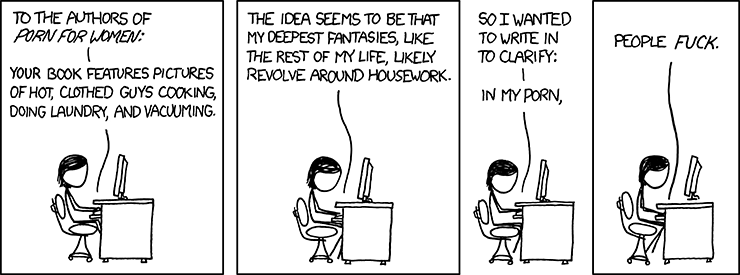Would you, could you? Ladies, if there was a little blue pill for women, would you take it or not? That’s the question that’s been on my mind lately in light of articles I’ve read on the subject. There’s been a lot of talk about how unfair it is that men have a cure for their sexual disfunction, but women don’t. Now pharmaceutical companies are all racing to change that. But is this a good idea? The fact is, female sexual disfunction is different from male sexual disfunction. One article I’ve read points out that while “men need a place for having sex, women need a purpose.” In other words, Viagra-type drugs may not do it for women simply because the problem isn’t physical (or just physical), it’s mental/emotional.
The number one complaint women have regarding their sex lives is that they’ve lost interest in having sex, whereas with men it’s that they’ve lost the capacity to have sex (i.e. they can’t get an erection). Which makes me wonder why female sexual disfunction is being treated like a medical condition in need of a pill in the first place. I know the reasons why my libido isn’t as lusty as it used to be, and it has nothing to do with being physically incapable of having sex. A lot of it comes down to the facts that A) I have two small children who just about wear me out; and B) when I’m not chasing after the kids, I’m working, which also wears me out. My problem isn’t inability to have sex; it’s stress and sleep deprivation, two factors that have an amazing capacity to kill sexual desire. A pill isn’t going to cure my reasons for not feeling the need to breed.
Of course, I suppose there is a physical side to my less-than-lusty libido. I am now in my 40s, and so my body doesn’t do or want to do the things it used to do. Hormone levels have changed, as they are supposed to with age. There have been some forays into looking at hormone therapy to fix these problems, but again, if my body is supposed to undergo these changes, do I really want to turn back the clock by flooding my system with testosterone of some other chemical?
I guess what I’m asking here is do I miss the libido and sexual drive of my 20s, enough to want to take a pill and ‘cure’ things? Well, yes and no. I really would enjoy being ready to have sex at the drop of a hat again, like I did back in my youth, but I also recall that I got very little done beyond bedding the Hubster back in those days (in fact, it’s a wonder he and I managed to graduate from college, we were that busy with each other). My memories of our early relationship are just one big blur of sex, sex, sex, pizza, and sex.
The fact is, there is more to life than sex and the occasional pizza (and yes, this is coming from an erotica writer). And there’s definitely more to a relationship than just sex and pizza (yep, still coming from an erotica writer). Sexual relationships change over time and that’s not a bad thing. The Hubster and I are still madly, deeply in love with each other even if we’re not constantly tearing each others’ clothes off. We do kinky stuff like talking instead, or going out to museums. You know, boring old-fart stuff. And we like it.
If however, you are not happy dealing with a lower libido, and if you think a lack of libido is killing your relationship with the one you love, then again I ask.
Would you, could you take a little blue pill to cure it all?
Here are a few articles on the topic of femal Viagra, including the drug f:
The Search for a Female Viagra
Failed anti-depressant drug could be ‘women’s Viagra’
New trials of female sexual dysfunction drug (Flibanserin) will be reported this week



